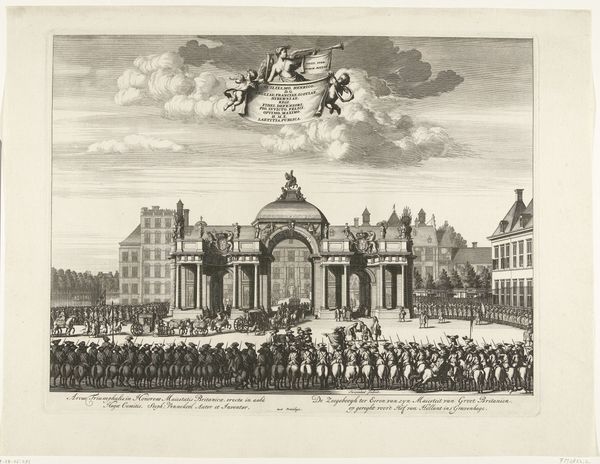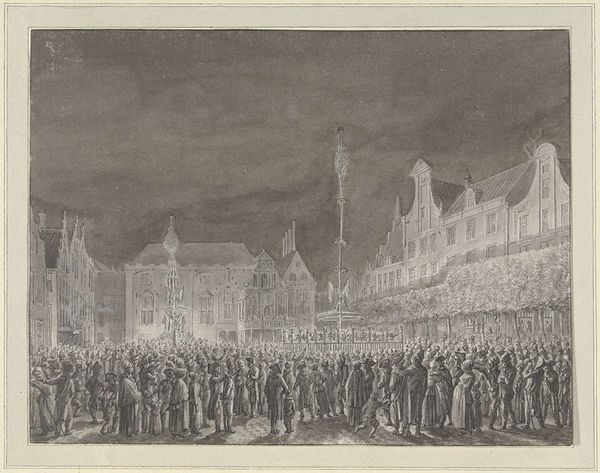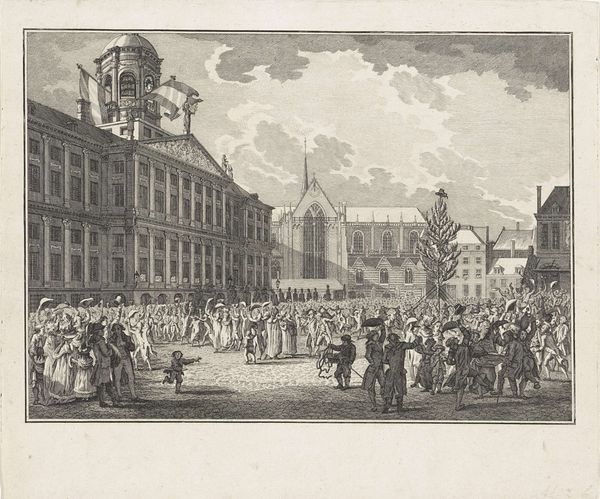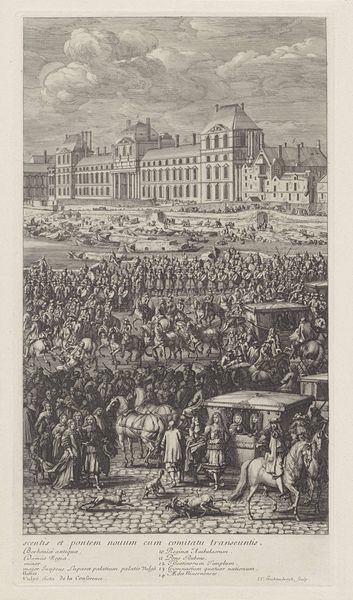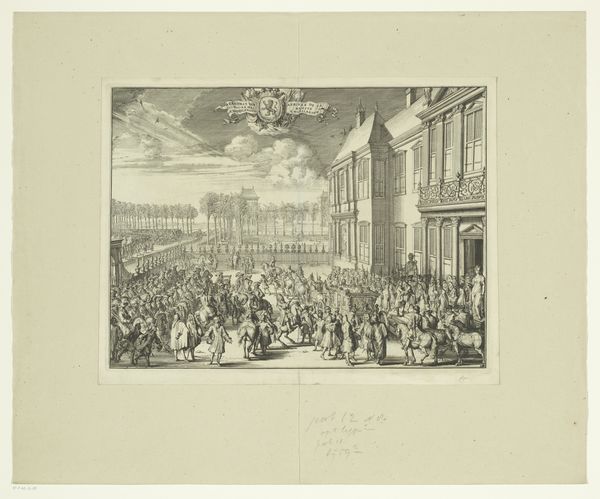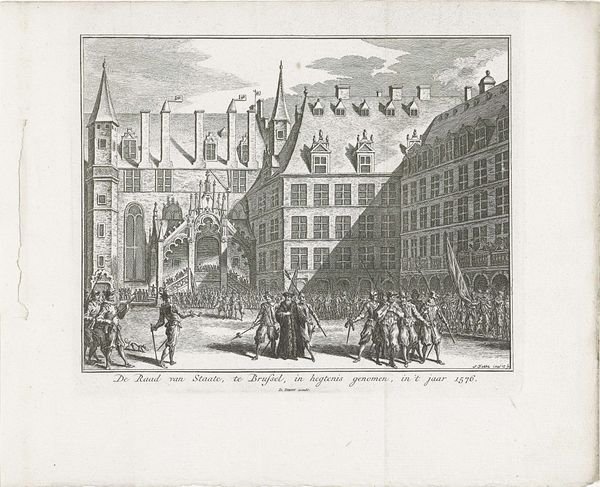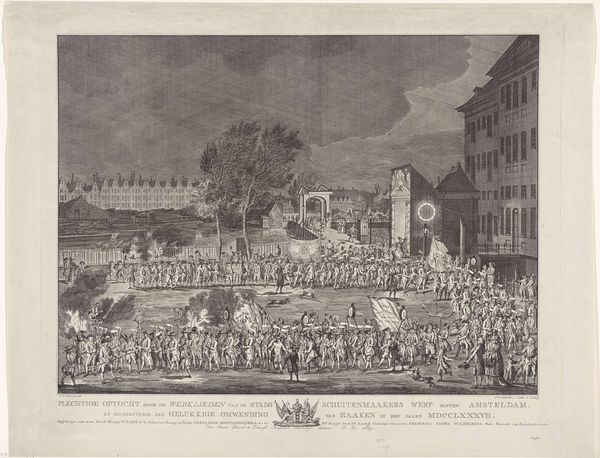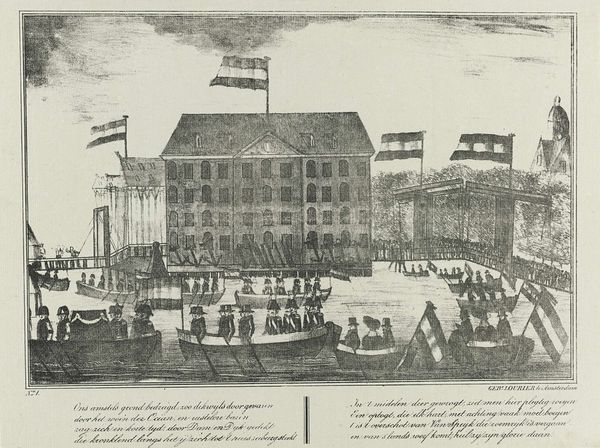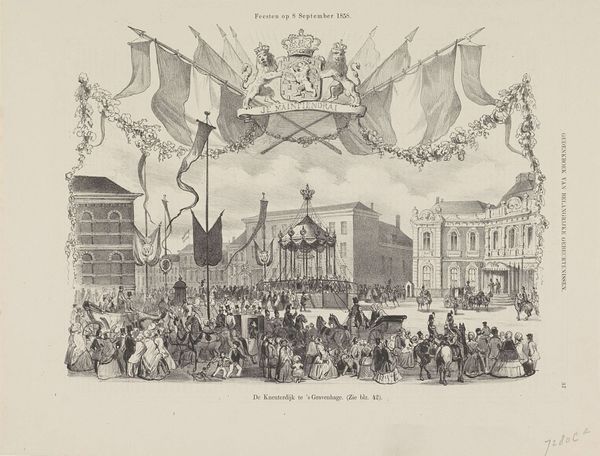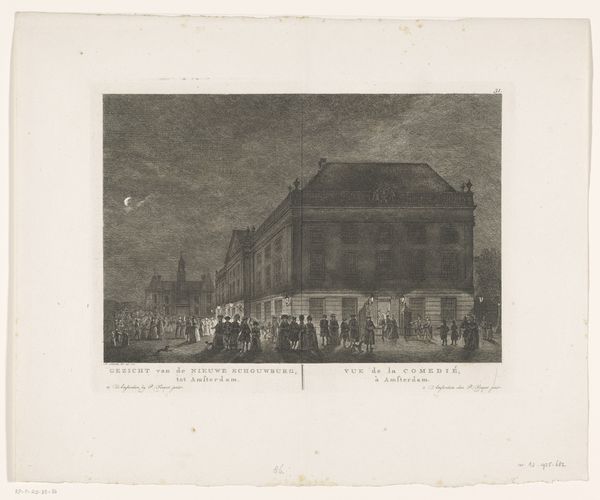
print, engraving
#
neoclacissism
# print
#
old engraving style
#
cityscape
#
history-painting
#
engraving
Dimensions: height 250 mm, width 315 mm
Copyright: Rijks Museum: Open Domain
Curator: This engraving captures a significant moment in Dutch history: "The Arrival of Louis Napoleon in Amsterdam, 1808." Editor: It’s a very detailed piece. All those tiny figures give a sense of grand scale, almost overwhelming. The meticulous lines create a real sense of depth and classical order. Curator: Indeed. This work exemplifies Neoclassical tendencies through its print medium, emphasizing accessibility, mass production and wider viewership that allowed broader audiences to consume history and propaganda, marking a shift from exclusive art objects toward a public domain. Editor: I can see that, certainly in the crisp rendering of the Palace and other key architectural features. The balance, the symmetry, that careful arrangement— it speaks to Neoclassical ideals of order and reason. There is the way light interacts with forms. It almost feels hyperreal, but clearly stylized, serving a function beyond mere representation. Curator: Exactly. Consider the engraver’s craft itself, how the lines translate political power, engaging viewers with a story shaped by production standards that favored specific aesthetics aligned with leadership goals for civic behavior through art. Editor: It really emphasizes this moment as the start of a new era. Seeing how people are arrayed below in this public spectacle is crucial. Is that celebration I see? It seems strategically composed for maximum impact. Curator: Well, popular sentiment might not have been as purely celebratory. Louis Napoleon was imposed as king by his brother, Napoleon Bonaparte. Prints like this helped cultivate a certain image, manipulating social attitudes using a technology designed to promote political aims, like manufacturing consent. Editor: Interesting, looking at the engraving itself now, I am noticing some of that careful detail, with the repetitive elements. Almost makes you think of the role this had as state propaganda that was used to promote their regime, right? Curator: Precisely! These lines tell more than meets the eye. They detail class structure, manufacturing capacity and modes of visual governance at a pivotal time. It goes to show how much history resides in materials and their widespread access. Editor: Thank you for pointing out such nuances. This dialogue reminds us how different contexts affect the function and perception of art. I shall definitely ponder the narrative crafted so meticulously via each careful stroke.
Comments
No comments
Be the first to comment and join the conversation on the ultimate creative platform.

